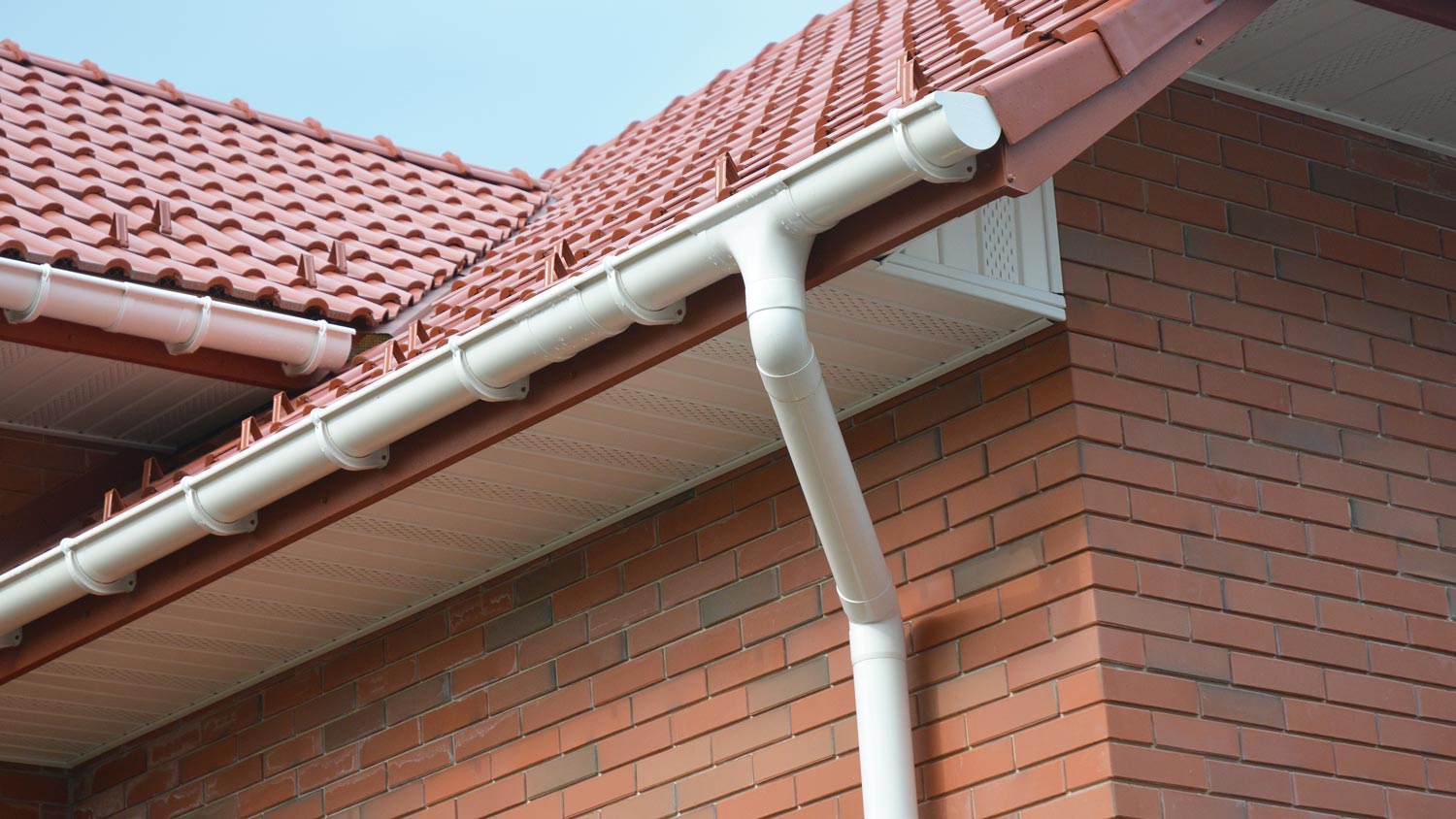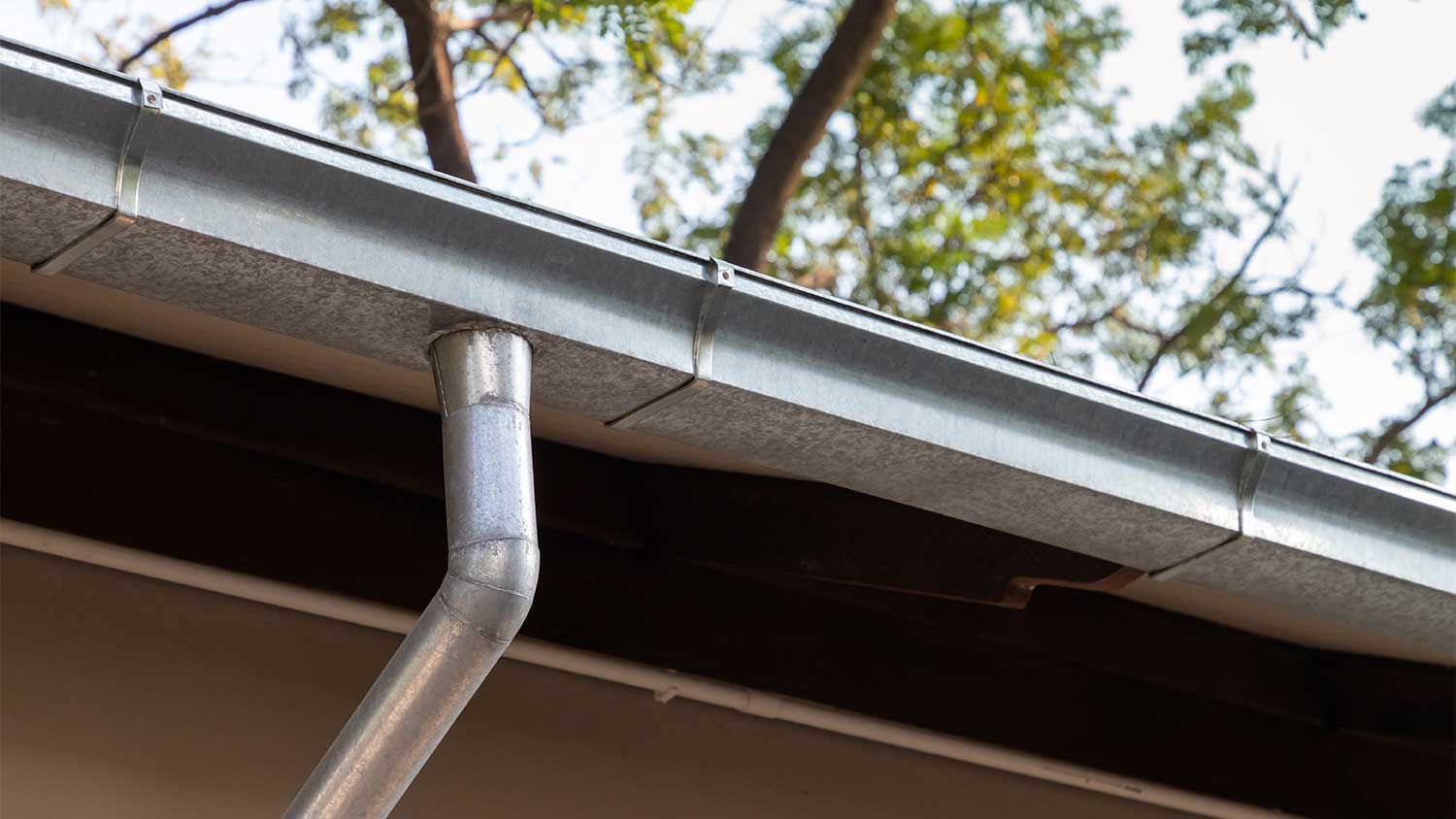
Heated gutters are a great way to minimize gutter damage and maintenance. Use this guide to estimate your heated gutter cost before getting started.
Debris-free downspouts one flush at a time


Gutter maintenance isn't glamorous, but it protects your home from water damage. A clogged downspout can lead to water pooling near your foundation or overflowing gutters, resulting in costly repairs. Fortunately, DIY-savvy homeowners, especially if you know how to clean gutters, can also learn how to clean a gutter downspout safely to save time and money. Learn how to tackle this straightforward project without the help of a pro.
The best time of year to clean your gutters is once in the spring and once in the fall. In the spring, you are clearing out debris like twigs and leaves from the winter, while the fall is about getting rid of the leaves from any nearby trees. If you have overhanging trees or live in an area with heavy foliage, you may need to clean your gutters more frequently.

Start by detaching the downspout extension, if your gutter system has one. You’ll find this piece at the bottom of the downspout where it redirects water away from your foundation. Carefully unscrew or slide off the extension and be careful not to damage any connected parts. Place it on a flat surface for cleaning later.
With the downspout extension removed, use a garden trowel to scoop out visible debris like leaves and twigs. If the blockage is more stubborn, run a garden hose with a spray nozzle through the downspout, starting from the top. The water pressure will help dislodge and flush out obstructions. Then, clean the extension by rinsing it thoroughly with the hose until clean.

Once the downspout and extension are clear, reattach the extension securely. Run water from the garden hose through the downspout to test the flow. The water should flow smoothly without pooling or backing up, which means the downspout is free from blockages.
If the water still isn't flowing correctly, move on to the next step.
A handheld garden auger can help remove clogs that didn't break up with water. Insert the auger into the downspout and rotate it to break apart any remaining debris. Slowly pull it out, ensuring you remove all loosened material. Test and repeat as needed until the downspout is fully clear.

Rinse the downspout and extension once more with the garden hose to remove any leftover dirt. Use a bucket to collect debris as it exits the downspout to prevent messes. Inspect the area to ensure no debris remains that could lead to future blockages.

Knowing how often to clean your gutters depends on where you live. Maintaining your gutters is a year-round task, but there are times of year that benefit from consistent cleaning. Aim to clean your downspouts at least twice a year as part of your seasonal maintenance routine in the spring and fall. This schedule helps address debris buildup from falling leaves, seeds, or other seasonal materials.
Additionally, check your gutters after heavy storms, which can cause blockages from branches and other debris. If you notice signs of trouble, such as water pooling around your foundation or overflowing gutters, it’s time to clean your downspouts immediately to prevent damage.
Cleaning gutter downspouts is a manageable task for DIY homeowners, but there are situations where hiring a professional is a better choice. If you’re uncomfortable using a ladder or your gutter system is located in a hard-to-reach area, hire a gutter professional near you to do the job.
The average gutter cleaning cost ranges between $120 and $235 or $1 and $1.25 per linear foot. Pros also have specialized tools to handle severe clogs or inspect for additional issues, like damaged gutters or improper drainage. When hiring a pro for your whole system, gutter cleaning includes tending to the downspout.
Weigh your comfort level and the complexity of the job to decide which approach works best for you.
From average costs to expert advice, get all the answers you need to get your job done.

Heated gutters are a great way to minimize gutter damage and maintenance. Use this guide to estimate your heated gutter cost before getting started.

Wondering how much gutter installation costs? We’ll break down prices by material, gutter type, and other factors impacting overall gutter costs.

Gutter repair costs may not be as high as you think—but it depends on the type of damage you're addressing. Learn why you need to hire a gutter pro for this work.

Wondering how much gutter installation costs? We’ll break down prices by material, gutter type, and other factors impacting overall gutter costs in New York, NY.

Learn about the different types of rain barrels and how to choose the best gutter rain barrel to collect rainwater at your home.

Discover galvanized steel gutters installation cost, including average prices, key cost factors, and tips to save on your gutter project.